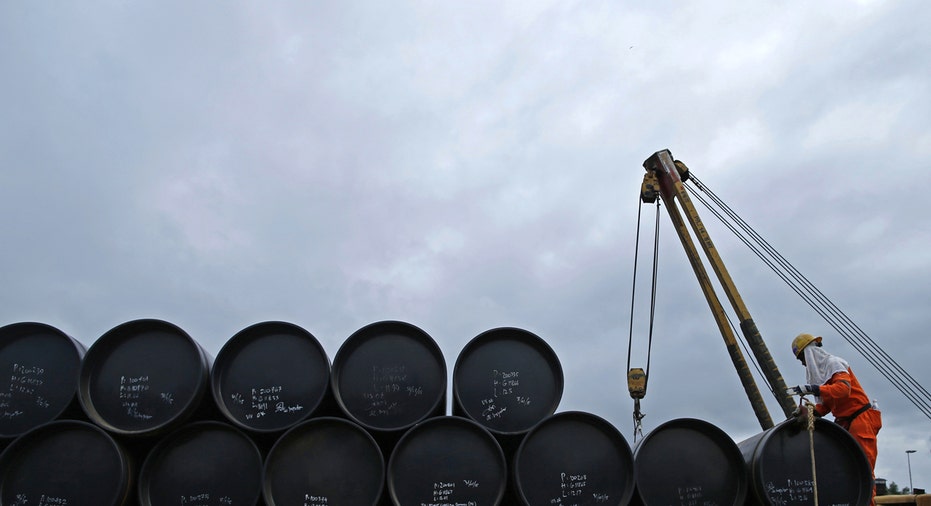December: The Month Commodities Traders Want to Forget

December 2015 will go down as a month in a year that most commodity traders would like to forget.
This was a month of strong technical bounces in markets loitering in deeply oversold territory. A month where even a shred of news or weather could send markets stampeding to the exit door. December capped off a year in which sentiment did in fact trump fundamentals. A month in which consensus grew to the point where it had itself a posse.
The evolution and or change in commodity trading perception brings to mind strong parallels of the way we view artwork. Up through today, market sentimentality (i.e. consensus) possesses the appealing and evocative attraction of a silhouette. One in which the observer desires space for imagination and interpretation, while quickly losing interest if the artist left no room for it. For months investors peered at misleading pseudo-pictures including the breathless commentary about China, warnings of FOMC miscues, the potential disruption of inflation, disinflation, and monetary policy.
It’s fascinating how long and far consensus can drive a market. Imagine if consensus is wrong.
Metals
Copper prices began the year at $2.8315 and marched to a high price of 2.9390 on May 5 before succumbing to the realities of China’s wobbly economy. Copper hit a bottom price of $2.0020 on November 23 and since has stabilized near $2.1225. From mid-summer onward, copper markets have been generally dictated by news of production cuts and how supply would respond. For the month of December, it appears restocking demand from downstream fabricators helped give copper prices a 3.5% boost. After shedding -31.24% year-to-date, palladium prices stabilized during December – managing a 1.18% gain.
A deeply oversold market condition, combined with favorable (global) car manufacturing forecasts, helped palladium - which derives two-thirds of its gross demand from that source.
Another year and another broad and volatile trading range for gold. Prices end the year down 10.30% from where they started. For gold, the 2015 high and low prices were made within a 49-day period. The high price of $1191.37 was registered on October 15th and bottoming-out at $1046.27 on December 3rd. Prices in December are flat as traders continually assess whether gold should be traded as a commodity or a currency?
Energy
While early signs of rebalancing are developing West Texas Intermediate prices continue to look the other way. For the month of December WTI has shed 14.59% and now stands down 39.34% on the year – the first back-to-back yearly loss for WTI since 1997-1998. For 2015, WTI made a high price of $65.50 on May 6th and its low price of $35.35 on December 21st.
Natural Gas prices shot up 14.59% on the week and 0.87% during the month as the bearish overhang of over-production gave way to a sliver of cold wintry weather predominantly in the Middle Western states. Gasoline prices drop another 3.45% during the month (-22.53% year-to-date) as bearish sentiment continues to trump the fundamentals of resilient demand and slowing production.
Agriculture/Softs
Wheat prices fall -1.21% during the month and mark a year-to-date low on December 2. A wicked combination of an uncompetitive U.S. market (i.e. due to strong U.S. dollar), a mild winter in Canada, and vibrant Black Sea shipments have kept wheat on a spiral downwards as the crop has shed 24.11% during the year. Lower than consensus export sales numbers have kept corn prices on its current downtrend as corn drops another 3.76% during December or a loss of 16.54% for the year.
For only the second time in 2015, soybean export sales came in beneath corn and well below the consensus estimate. The reality of stagnant export sales has been well enough to offset any weather or flooding concerns. In December, soybeans have lost -1.95% and now stand to lose 14.60% on the year. Coffee prices add 5.06% during December on what consensus believes is a short-lived technical bounce.
For the year, coffee prices were down 29.74% as a perfect growing season and weak Brazilian currency has kept any rallies very brief. That said, some segments of consensus maintain that bearish sentiment has gotten way out in front of the actual fundamentals.
Sugar prices gap +3.00% at the end of December as weakening South American weather conditions point to a sugar market that may enter 2016 in deficit. On a year-to-date basis, sugar has lost 6.33% as a very weak Brazilian currency and surprising supply from India has set the stage for the year-long bearish narrative.
Livestock
In uncharacteristic fashion, Feeder Cattle spent a few trading days in “limit-up” territory as USDA feed reports provided clear evidence of a market in soon to be underweight supply. For the month, Feeder Cattle added 1.08% - taking the year-to-date loss to 18.90%.
Aggressive cash bidding by meat packers have given a much elated lift to Live Cattle prices as December prices are up an astounding 3%. Winter weather and resilient demand seem to be the culprit of this month-end surge. On a year-to-date basis, Live Cattle is branded with an 11.58% loss.
A very strong wholesale market propelled lean hog prices up 4.84% from their slumber during the month. Immediate weather concerns and fear of holiday shortages have kept the cash bids firm. This month end surge has been a welcomed relief to the market as Live Hogs have been in deep negative territory most of the year and will finish down 18.87%.



















